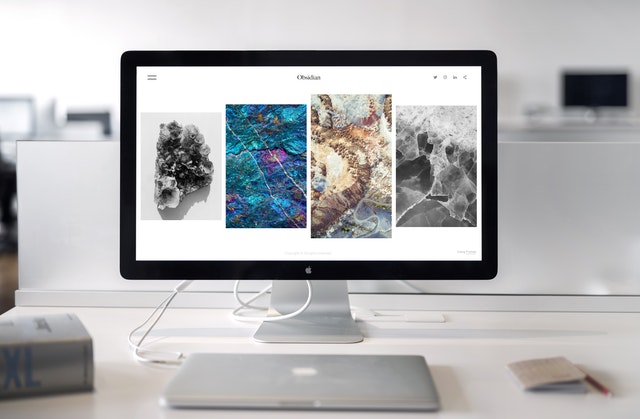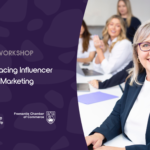Search Engine Optimisation (SEO) is the practice of increasing the quantity and quality of traffic to your website through organic search engine results. SEO is critical for businesses today, as it is the main mechanism in which a business will be discovered online.
SEO isn’t something you do once on your website and then move onto something else. It’s not a fad that is going to phase out soon, it is something that needs to be continually massaged and updated.
If you haven’t focused on your SEO until now, it can all seem a little overwhelming. However, if you start with just a few of the suggestions below and then move onto the next, you will soon master it.
SEO strategy can be divided into two different categories: on-page, and off-page SEO. Both are critical to the success of an SEO campaign and your search ranking. Search engines evaluate your site compared to other websites when deciding on ranking hierarchy.
Put succinctly, on-page SEO looks at what your website is about. Off-page SEO looks at how authoritative and popular your site is. What your website ranks is largely determined by on-page factors, while how your page ranks in search results are largely determined by off-page factors.
On-page SEO is one of the fastest ways to improve your Google rankings and the easiest for you to manage yourself (i.e. not having to pay for this service), mainly because you can optimise your page in about two to three minutes and start to see a ranking boost within days.
Below is a list of good on-page SEO practices for you to consider:
Properly format your page
Your website needs to stand out in a very crowded market – but don’t underestimate the value of your website being neat, clear, organised, and uncluttered. Consider things like your font size and type, ensuring they are appropriate for your audience. Use coloured text, bold font, and italics sparingly. Heading, bullet points, and checklists make it easy for visitors to quickly review content.
Review your website like you are looking at it for the first time and ensure it is uncluttered, simple to read, and logical in its structure.
Short URL
Use short URLs for your pages, with targeted keywords within the URL. Short URL’s also look better when used on alternative platforms as links, such as Newsletters and Social Media pages, to lead people to your website.
So if you are adding a new product to your website, a blog, newsletter, or any content for that matter, check the automated URL the website will develop for you, if it is too long and cumbersome, we recommend you edit the URL to something shorter.
Headings
Using Heading 1 and Heading 2 tags are important on your website to increase SEO. Not only do headings make your content easier for the reader to digest, but it also makes it easier for search engines to go decipher as well. Heading tags are also a great way to show the structure of your content and emphasise your key points.
When writing blogs, newsletters, tasting notes, about our history, and the like, be sure to break your content up into shorter bites of information with Heading 1, Heading 2, or Heading 3 structure within the content.
Readable content
People don’t generally have time to read content that is difficult to understand and technical in nature. Equally, if you want people to visit your site and to spend time on it, write content that can be easily understood. Tell stories, be engaging, write content that your audience wants to hear, and make sure it is readable. Some handy tools to help you write content that is easy to digest are available at readable.com or grammarly.com.
Loading Speed
In 2010 Google announced that page speed would affect ranking, as page speed is directly related to user experience. The faster the page load, the better the user experience. Studies of users’ behavior show the faster your page loads, the more likely users are to remain on your website and have a positive experience. Check what plan you are paying for with your website host to ensure your load speed is adequate.
Internal Links
Internal links are hyperlinks that point the user to the same content within your existing website. Internal links are essential as they help establish a website’s architecture. Google uses internal links to discover new content. Generally speaking, the more internal links a page has, the higher it will rank on Google.
Double-check your website and add as many internal links as you can and equally check all your existing links are working.
External Links
Also referred to as outbound links, external links will send your reader from your website to another website. Commonly, external links are used to verify facts or simply point people towards resources. Websites with greater external links are perceived to be more important and therefore are ranked higher in Google searches.
In everything, you develop online, outside of your website be sure to add links to your website. When sending out your newsletters to wine club members, a backlink to your website. In social media profiles and within the content, a backlink to your website. Join regional associations and industry bodies and ensure there are backlinks to your website from their membership or business listing pages and so on.
Optimise your images
Check all your images on your website to ensure they have been optimised. Optimising images is the process of decreasing their file size without sacrificing the quality so that your page load times remain low.
It’s also about image SEO by getting them to rank on Google and other image search engines. You can do this by having descriptive filenames and include alt text.
Optimise your voice search
More and more people are using voice search to find the information they require. Ensure your business ranks on voice search by incorporating voice search phrases into your website content. It can help to use full sentences in a natural and conversational style rather than using single keywords within your content.
Long-form Content
Google loves long-form content. Long-form content isn’t just about providing lots of words for the sake of it, but it is about providing valuable information that it reaches or exceeds a particular word count.
To put it succinctly, long-form content can make your business look more like an authority in your field. So, it’s important to develop and updated regularly content on your website. This can be done most easily through the development of blogs or newsletter updates. Consider writing an annual vintage report or a weekly what’s happening at the winery. Update tasting notes for new vintages and include sub-headings like, about the vineyard, about the wine, about the brand, about the winemaker, where can it be found, etc.
Use of video
Video is quickly becoming one of the most important forms of content marketing and its presence could make or break your optimisation efforts. One of the main reasons video is becoming the go-to form for content delivery is because it works well at delivering large amounts of information shortly and concisely. Google also loves video content, especially long-form video content. Remember, if you develop a long-form video, you can also use the video at trade shows, events, and presentations to distributors. You can also use it in smaller chunks on your social media pages, in wine club newsletters, and anywhere else online. The cost of a video for your winery should be seen as an investment, not an expense.
Contact information
All your contact information should be clear and in plain sight for people to find on your website. Ensure people can click on your phone number to automatically dial your business – the same goes for your email address. Make sure your address is accurate and consistently represented in all online channels.
Optimise your site for mobile devices
You would think that we wouldn’t need to specify this requirement, however, there are several wine businesses whose websites are still not optimised for mobile devices – plenty of them! There’s no way to sugar coat this – if your website isn’t optimised for mobile devices, it will definitely hinder the user experience and will adversely affect your page ranking. There is no getting around it – optimise your website for mobile devices now.
Continuous improvement
A website is not a set and forgets tool for your wine business. It requires continuous improvement and updates. Your page’s user experience should constantly be reviewed and updated to improve visual readability, images, headings, broken links, and updated content. For best practise SEO, you just need to be continually adding, adding, and adding to your website to maximise our ranking.
As you can see, SEO and ranking higher on Google is a complex web of tasks that can take time, energy, and effort, however, the results are immensely rewarding. Our suggestion is to tackle one aspect at a time and continually grow your content and activities over time.







